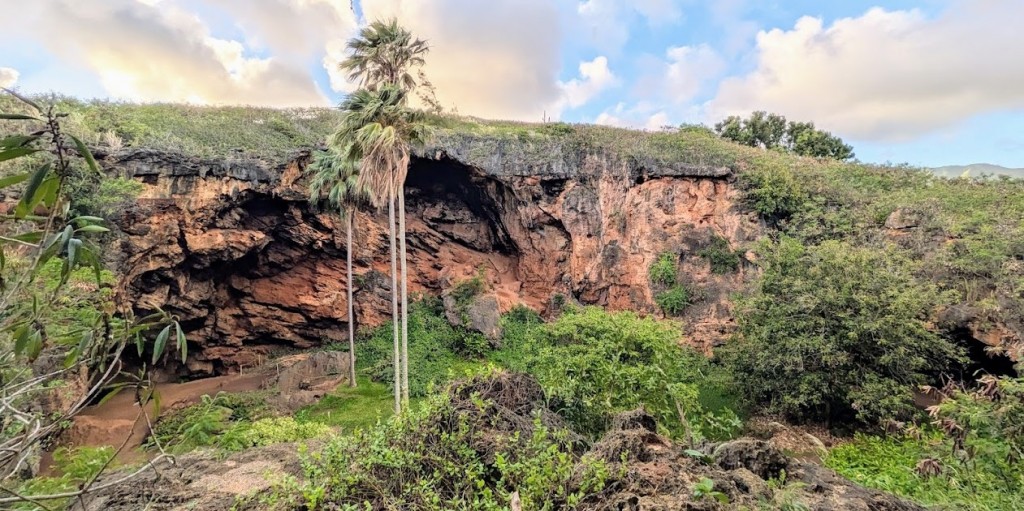Thirty-three years at Makauwahi Cave…Was it all worth it?
January 12, 2025

Photo by Billie Dawson
It is only natural that after working at Makauwahi Cave for over three decades, Lida and I would look back and ask ourselves if we would have done it all knowing that things would not turn out well with the landlord, Grove Farm Company. For details, click here, but most readers know the broad outlines already: now under new leadership, Grove Farm put us on a month-to-month lease arrangement whereby we could no longer ask for grant funding, so we had to close down. We thought we had worked out a good transition plan with Grove Farm staff, but none of those staff are working there now and the new leadership has made it clear that they are not interested in working with us. Although the site has had 60-80,000 visitors per year over the last decade, free public tours every day of the year, and the maintenance program that we managed to fund with grants and donations, are no more. What Grove Farm has planned for the property is still not clear.
So…was it worth it? For us and our staff, programs we provided to ultimately about one million visitors were their own justification. People from all walks of life, from local students to global tourists, scientists, and conservationists, could see for themselves the abundant evidence in the fossil record for climate and sea-level change, a mega-tsunami, floods, wildfires, and a sequence of human land-uses. Visitors could also see here that conservation works, that worn- out farmland and quarry properties could once again flourish with re-established native plants. That’s all in the past now, but what of the future? We leave behind 20+ acres of land that now supports nearly 100 native and Polynesian plant species, including several endangered species. The wetlands that host all five species of endangered waterfowl are still there. Some trees we planted, with the help of thousands of volunteers beginning a quarter century ago, are quite huge, including rare native palms 50 feet tall. Many native species we have brought back – all represented as fossils in the sediments of Makauwahi Cave — are reproducing successfully on the site. Scientists continue to work on the wealth of data collected there (see below), and more studies and publications are planned, to add to the many major peer-reviewed publications in international journals already.
Who knows what’s next? Grove Farm officials have announced that they plan to create a reserve of over 7,000 acres along the coastline here. If true, that would be wonderful, and we wish them the best of luck in their efforts to preserve the cave and its restored surroundings.